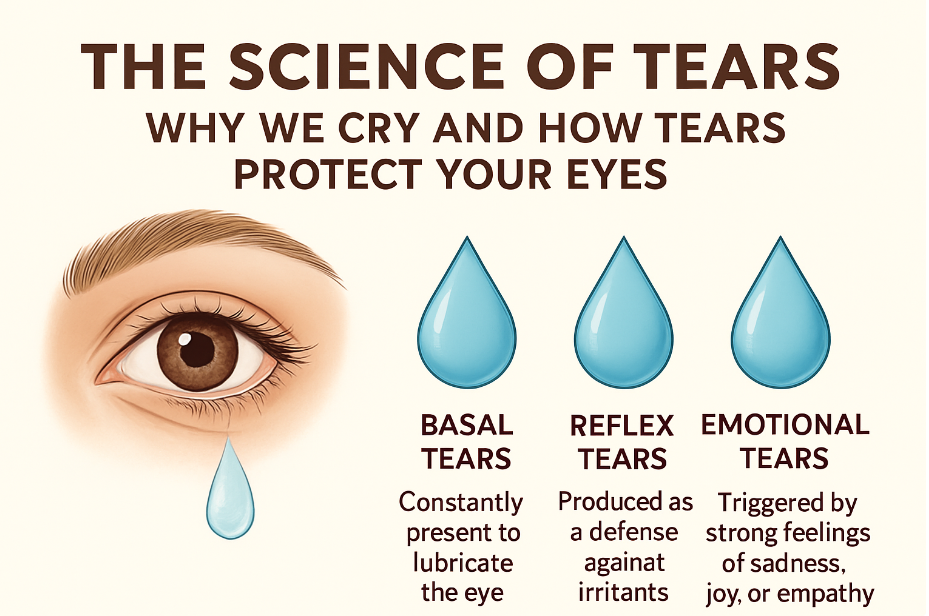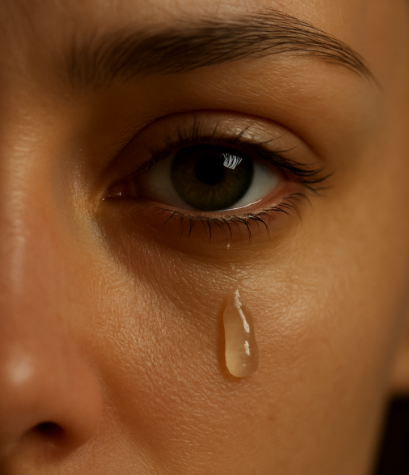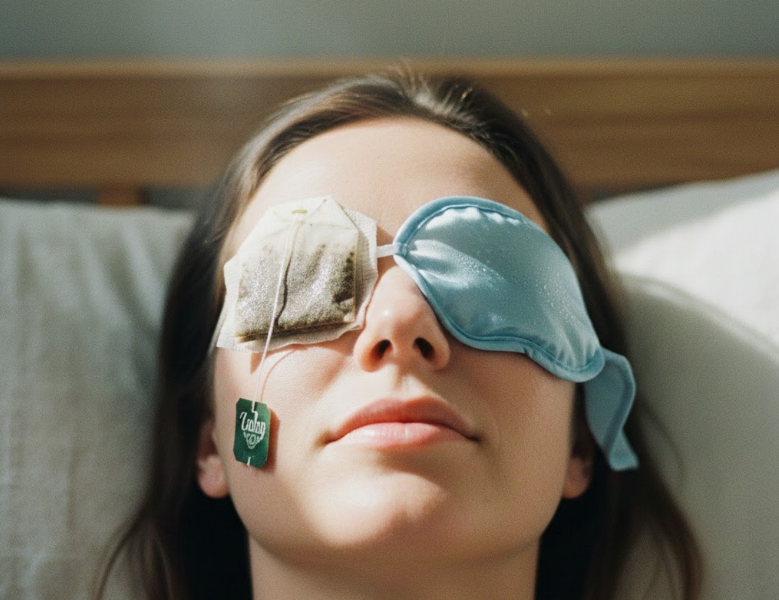Introduction
Tears are one of the most universal human experiences. From the very first cry at birth to the tears shed in moments of joy, grief, or pain, crying is deeply woven into our biology and psychology. But what many don’t realize is that tears are far more than just emotional expressions — they are essential protectors of our eyes, safeguarding vision and maintaining overall eye health.
In this article, we’ll explore the science of tears: why we cry, the different types of tears, how they function, and the hidden ways they keep our eyes safe and healthy.
1. The Biology of Tears
Tears are not just water falling from our eyes. They are a complex biological fluid, containing proteins, electrolytes, lipids, and enzymes that nourish and protect the eye’s surface.
Types of Tears
Scientists classify tears into three main types:
- Basal tears – constantly present to lubricate the eye.
- Reflex tears – produced as a defense against irritants (like smoke, onions, or dust).
- Emotional tears – triggered by strong feelings of sadness, joy, or empathy.
These different categories reveal that tears are multifunctional, playing roles in health, defense, and emotional communication.
2. Why Humans Cry: The Emotional Connection
Crying is one of the most uniquely human behaviors. While some animals produce tears for lubrication, humans are the only species that shed emotional tears.
The Psychology Behind Crying
- Stress relief: Crying releases cortisol and stress hormones.
- Social bonding: Tears signal vulnerability, encouraging empathy.
- Emotional reset: Many people feel calmer after crying, thanks to endorphin release.
👉 Researchers suggest that emotional crying evolved as a form of non-verbal communication that strengthens human connection.

3. How Tears Protect Your Eyes
Tears are the eye’s natural defense system. They:
- Lubricate the cornea and prevent dryness.
- Wash away dust, debris, and pathogens.
- Contain enzymes (like lysozyme) that kill harmful bacteria.
- Nourish the cornea with oxygen and nutrients.
👉 Without tears, our eyes would be vulnerable to infections, scratches, and even vision loss.
4. The Chemistry of Tears
What’s inside a tear? Far more than saltwater!
- 98% water
- Electrolytes (sodium, potassium, chloride)
- Proteins (lysozyme, lactoferrin)
- Lipids (for moisture retention)
The Surprising Difference in Emotional Tears
Studies show emotional tears contain higher levels of stress hormones like ACTH and prolactin. This suggests crying helps the body “purge” excess stress chemicals.
5. Tears Across Cultures and History
Throughout history, tears have been symbols of weakness, strength, spirituality, and art.
- Ancient Rome & Greece: Tears were linked with honor and tragedy.
- Victorian England: Women’s crying was romanticized, men’s discouraged.
- Modern psychology: Crying is seen as emotionally healthy.
👉 Tears are universal, but their interpretation varies by culture.
📖 Related Articles
6. Can Crying Improve Eye Health?
Yes! Controlled studies show that crying:
- Flushes out toxins
- Reduces risk of eye infections
- Relieves dry eye symptoms (emotional tears contain natural lubricants)
However, chronic crying from stress without hydration can cause mild irritation.
7. Common Myths About Tears
- Myth 1: Crying weakens eyesight.
- Fact: Crying protects the eyes and removes irritants.
- Myth 2: Only sad emotions cause tears.
- Fact: Joy, laughter, and even empathy trigger them.
- Myth 3: Men cry less because they are stronger.
- Fact: Cultural, not biological; men and women both benefit from crying.
✅ FAQ
Q1: Are tears good for your eyes?
Yes. Tears lubricate, protect, and nourish your eyes, keeping vision sharp.
Q2: Can too much crying damage your eyes?
No long-term damage, but excessive crying may cause temporary puffiness or irritation.
Q3: Why do onions make us cry?
Onions release sulfur compounds that stimulate the eye’s reflex tear glands.
Q4: Do animals cry emotional tears?
Most animals produce tears for lubrication, but humans are unique in shedding emotional tears.
Conclusion
Tears are much more than signs of sadness — they are biological protectors, emotional healers, and cultural symbols. Every tear shed carries with it a mix of biology and psychology, reflecting how deeply interconnected our emotions and our health truly are.
Next time you cry, remember: your tears are not just emotional, they are essential for keeping your eyes safe, your vision clear, and your soul a little lighter.



